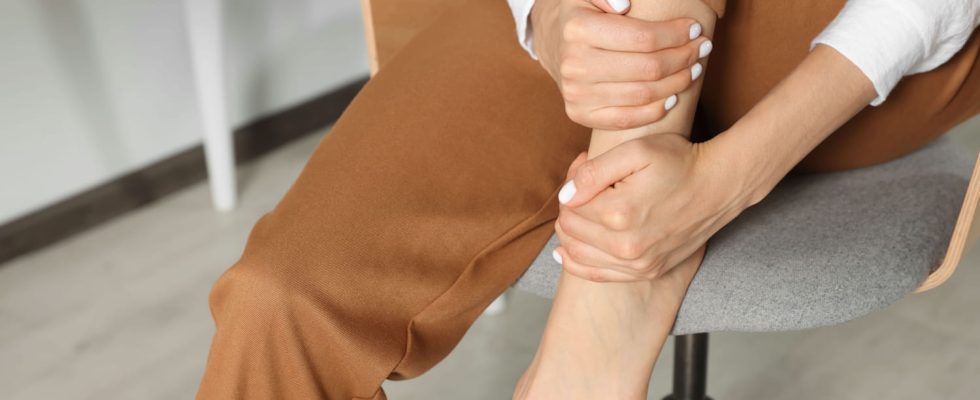An “unusual” increase in cases of Guillain-Barré syndrome is reported in July in Peru. Of neurological origin, this condition paralyzes the limbs and leads to quite spectacular symptoms. Because of what ? What are the risks ?
A health emergency is declared to Peru since July 8, 2023, for 3 months. In question, a “Unusual” rise in cases of Guillain-Barré syndrome. “Guillain-Barré comes forward every year and there has been a significant increase in recent weeks which requires us to act as a state to protect the health and life of the population” said the Peruvian Minister of Health quoted by Point.
Guillain-Barré syndrome, also called polyradiculoneuritis acute demyelinatingis a peripheral nerve damageand more precisely of their myelin sheath. “It’s a medical emergency because it is a rapidly extensive damage to the nerves leading from the brain and spinal cord to go to all areas of the body (the peripheral nervous system)” explains Pr Mathieu Zuber, head of the neurology department at Saint Joseph Hospital (Paris). This syndrome affects young subjects most oftenas well men than women. It is not not contagious.
The plateau lasts 1 to 2 weeks, rarely more
Guillain-Barré syndrome is manifested by a limb damage And begins generally at the level of legs. “It is motor and sensory disorders : the affected person has limb weaknessesfeel the extremities of their limbs less well, at most the limbs are paralyzed” details the neurologist. The paralysis can sometimes reach the respiratory system or swallowing. “This syndrome settles down quickly, over a few days or even a few hours and reaches a plateau in a few hours, days, a week maximum. This plateau can stop at a moderate paralysis of the legs and arms or go up to a respiratory and swallowing impairment which can lead to hospitalization in intensive care” he specifies. The plateau lasts 1 to 2 weeksrarely more, and is followed by a slower downswing over a few weeks during which people see their symptoms slowly improving.
“Guillain-Barré syndrome is an example at the neurological level of a autoimmune disease. The body develops antibodies which, through a game of sharing targets, will attack the body” informs Professor Zuber. “Nerve myelin has some antigens on its wall that resemble antigens of bacteria or viruses” he explains. For example, the Campylobacter jejuni bacteria (first organism involved) is well known for having shared targets between its cell wall and that of myelin. A a number of viruses have been associated with the appearance of Guillain-barré syndrome:
- there flu,
- of Cytomegalovirus,
- of Epstein-Barr Virus (infectious mononucleosis),
- and more recently the virus of Covid-19.
“The second type of trigger may be what causes an immune reaction, for example vaccines, especially the one against the flu or against diphtheria even if it is less common today because the vaccines are more purified” adds the doctor.
Electromyogram shows slowing of nerve impulses
Diagnosis is primarily clinical. “The symptoms are quite spectacular, in people in full force of age: they weaken, fall in the street…” describes Professor Zuber. “The clinical examination shows signs of nerve damage. There is a loss of tendon reflexes” he explains. Complementary examinations confirm the diagnosis. Electromyogram (EMG), a study of electricity in the nerves, shows a slowing down of nerve impulses due to damage to the myelin. A lumbar puncture look for an abnormal elevation of proteins suggestive of Guillain-Barré syndrome.
Treatments for Guillain-Barré syndrome are specific treatments, common to other autoimmune diseases. “They consist of getting rid of the antibodies that interfere with the myelin sheath, which allows the nerves to recover” says Professor Zuber. “This can be done by practicing intravenous immunoglobulin infusionsand more rarely with a heavier technique such as plasma exchange which consist in filtering the antibodies in the blood” he specifies. To this are added the re-education (sometimes in a rehabilitation center), physiotherapy sessions, occupational therapy and taking analgesics because the sensory impairment can cause pain.
The majority of people fully recover after Guillain-Barré syndrome. “15% of people keep sequelae with a varying degree of disability : some are autonomous but can no longer run for example, others can have serious sequelae and remain dependent” says the neurologist. The sequelae can be decreased sensitivity to touch, persistent tingling or muscle weakness, especially in the feet or hands.
“It’s a syndrome that has a favorable outcome for the majority of people : some keep sequelae and an even smaller percentage die” informs Professor Zuber. The majority of people with Guillain-Barré syndrome recover their physical abilities after 6 to 12 months.
During the summer of 2021, the European Medicines Agency (EMA) reported almost 900 cases of Guillain-Barré syndrome occurred after an injection of the Covid vaccine Vaxzevria ofAstraZeneca. This side effect is considered as “very rare” or approximately 1 person in 10,000. After an analysis of the cases of Guillain-Barré syndrome (GBS) declared in Europe, the EMA had considered that there was also a possible link with the vaccine Janssen. No association has been identified between this syndrome and COVID-19 Comirnaty vaccines (Pfizer) and Spikevax (Moderna). The signal has also been confirmed in the United States. In a document published onlinethe United States Medicines Agency (FDA) indicated that symptoms suggestive of Guillain-Barré syndrome generally begin within 42 days of vaccine administration. The authority recalled as in Europe that “the benefits (of vaccination) clearly outweighed the potential risks” and “The likelihood of that happening is very low.”
Thanks to Pr Mathieu Zuber, head of the neurology department at Saint Joseph Hospital (Paris).
